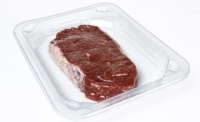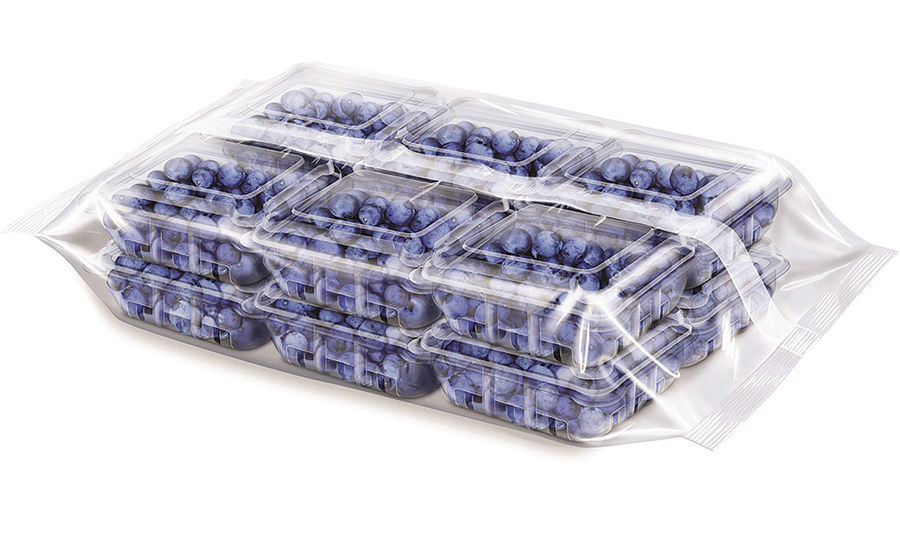Materials
Modified Atmosphere Packaging Helps to Reduce Food Waste
StePac reveals a four-pillared strategy for sustainable packaging.








The environmental problem of plastic pollution is a high concern among a surging eco-conscious global population who are striving to reduce plastic use. When used responsibly, plastic packaging plays a crucial role in mitigating an even more critical problem of food waste. Fresh produce packaging experts at StePac L.A. Ltd. illustrate how functional plastic packaging can be instrumental in tackling this phenomenon.
Food waste is a global problem. Sadly, a large percentage of the food perishes even before it ever reaches the consumer. Not only does this create an ethical crisis of food depravation, but it also exerts tremendous financial losses and is an environmental burden — as food waste contributes to about 8% of global greenhouse gas emissions.
StePac specializes in developing advanced functional packaging solutions with capabilities to extend the shelf life of fresh produce to try to reduce produce waste. The company’s packaging line is centered on Modified Atmosphere Packaging technology (MAP) with built-in humidity controls to effectively slow respiration inside the packaging, delay aging processes and inhibit microbial decay. This serves to preserve the quality and nutritional value of the produce and supports prolonged storage, long-haul shipment and reduced supply chain waste.
“Food waste and plastic pollution are urgent issues, yet food waste is not quite receiving the attention that plastic pollution is,” says Gary Ward, Ph.D., business development manager for StePac. “As fresh food requires travel and processing from field-to-fork, abandoning functional plastic packaging would inevitably exacerbate the waste crisis. Plastic packaging plays a critical role in the fresh produce and food industry as it is the medium most capable of keeping food fresher, longer, allows for wider food distribution and typically carries a lighter footprint than other packaging materials. Nevertheless, we need to apply a more responsible, leaner and sustainable approach.”
Strategy for Sustainable Packaging
In its commitment to curtail food waste, StePac designed a four-tiered sustainability strategy designed to reduce excessive plastic use while driving more responsible packaging, supporting the transition from a linear toward a circular economy. The new strategy addresses key areas of manufacturing, use and recycling. “Our technology is designed to significantly lighten the environmental footprint of plastic packaging,” notes Ward.
1st pillar: Use plastic packaging only if it has positive climate effect. StePac’s portfolio of modified-atmosphere packaging is “Climate Positive.” This means it can extend shelf life and reduce waste in the fresh produce supply chain while saving more carbon emissions than are generated in the lifecycle of the plastic packaging.
One example of this is how the packaging enabled Peruvian exporters to make the transition from airfreight to sea freight of white asparagus to Europe. This resulted in an incredible 95% reduction in CO2 emissions per unit weight shipped (from 5,821 to 283 Kg/ ton)1.
In another example, Xtend packaging also proved a compelling replacement for iced shipments of broccoli from Salinas Valley, California, across the American continent. The result: a net saving of 144 kg CO2/ton of broccoli shipped from the east to west coast equating to a 40% reduction1. “Scrapping such innovative packaging for such and similar supply chains is likely to increase waste and carbon emissions and drag the industry a big, unsustainable — and expensive — step backwards,” insists Ward.
2nd Pillar: Climate-positive packaging must be as lean as possible. StePac applies lean packaging formats for its Xtend range of bulk packaging liners as well as for its Xgo line of retail packaging formats. “We use films that are typically 20-35 microns thick for both preformed bags and automated packaging” explains Ward.
The company also developed and patented the Xflow packaging system to facilitate a shift to automation for packaging bulk produce, reducing plastic use by as much as 40% in comparison to manual packing in pre-formed bags.
StePac’s innovative lidding film replaces traditional clamshells and can incur the dual benefits of extending shelf-life while saving as much as 25-30% plastic material. This product has enabled Peruvian blueberry exporters to pack and ship by sea to mainland Europe and reap multiple benefits, including packing at source in the final packaging formats to reduce labor costs, and preserving quality all the way to the consumers’ home in a punnet covered with a mechanically recyclable lidding film. Obviously, this is only achievable when using high performing, highly reliable packaging.
3rd Pillar: Mechanically recyclable packaging. StePac offers a range of homo-
polymer-based fully recyclable products with modified atmosphere properties that can be mechanically recycled to support a circular economy. These include bulk packaging products, films for automated packing of retail packaging formats, standing pouches and top-seal solutions manufactured from fully recyclable polymers.
4th Pillar: Chemical recycling should complement mechanical recycling. More sophisticated, multilayered laminated structures have emerged over the years in the fresh produce packaging industry that cannot be mechanically recycled to be reused in the same or similar products. Chemical recycling converts plastic materials into their initial monomers, allowing them to be reborn into new plastic products.
“Replacing some of these sophisticated plastic structures without increasing waste is no simple task,” adds Ward. “Fortunately, chemical recycling techniques are already available that are ‘complementary’ to mechanical recycling systems in supporting a circular economy and the ongoing use of sophisticated multilayered structures. We are working with leaders in the plastic industry to begin introducing chemical recycled raw materials into our products over the coming year. This is a substantial breakthrough and it is the direction the industry should take.”
“Developing shelf life extension packaging products requires a profound understanding of the interaction between produce physiology, packaging design and cold-chain logistics,” explains Ward. “This sustainability initiative exemplifies the company’s commitment to manufacture functional and sustainable plastic packaging solutions that contribute to reducing food waste while having minimal impact on the environment. This is where education and holistic aspirations meet innovation.”
1 Westra, E.H. and Eppink, M.M. (2008). Positive impact of plastic packaging on CO2 emissions. Wageningen UR, AFSG.
Looking for a reprint of this article?
From high-res PDFs to custom plaques, order your copy today!









